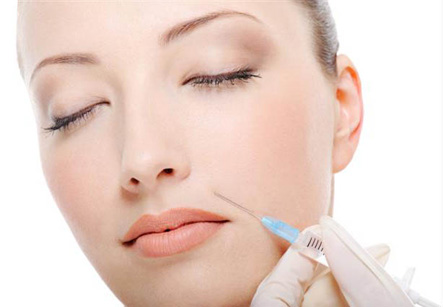Collagen Injection
Introduction
Collagen injections are a well established technique helped to erase frown lines, crow’s feet and nasolabial folds or smile lines. Collagen injections have been around for a while, but have recently lost their fame to the latest technique of soft tissue fillers which have proven to last longer.
Need of Collagen Injection
Collagen injections are given in doctor’s clinic or hospital settings.
Collagen is a type of protein mainly found in connective tissue in the body. Its chief function is to support the skin, bone, cartilage and blood vessels. 80 per cent of the skin is made up of collagen. It also maintains the skin’s integrity, but collagen breaks down with growing age. The scaffold of collagen is intact in young skin, making it remain elastic and moisturized. When this collagen gets broken down during aging- wrinkles, folds and lines get formed. Gradually, the support structure becomes weak and the skin loses its suppleness. The skin begins to lose its tone as the collagen support breaks down. Collagen in the skin gets under stress with every facial expression. The effect of these facial expressions is cumulative and facial lines start appearing. Collagen injections help by restoring the original level of collagen in the skin.
Collagen injections have been used for decades to treat minor imperfections in facial skin, including laugh lines, wrinkles, creases, crow's feet, and acne scars

Ideal Candidates for Collagen Injections
People with frown lines, crow’s feet and nasolabial folds or smile lines and between the age of 35 to 60 years normally opt for collagen injections.
In below mentioned cases, people should avoid collagen injections:
• Pregnant or nursing females
• People allergic to bovine products or lidocaine
• People having certain medical conditions like- autoimmune diseases.
Types of collagen fillers are
Collagen fillers are obtained either from human skin or animals:
• Collagen fillers containing human collagen
• Bovine collagen fillers produced from cows, it require allergy testing
• Porcine collagen fillers derived from pigs, it require allergy testing
• Hybrid gel filler consisting of millions of synthetic microspheres (polymethylmethacrylate or PMMA) suspended in purified bovine (cow) collagen. This is a mixture of bovine collagen and homogeneous PMMA microspheres, which are tiny plastic spheres. Those spheres not only create a desired new look, but they also stimulate natural collagen production.
• Another key source for collagen fillers is patient’s own body. Autologen is collagen from patient’s skin, which is harvested during a previous surgery and processed into liquid form. If a patient is undergoing a tummy tuck or another surgery where skin is removed, then the skin can be used to extract collagen. It’s then sterilized and prepared for re-injection. The processed liquid collagen can be safely stored for five years and used as required.
• Isolagen injection is collagen that’s also taken from patient’s skin, but the method is different. In this method, it’s cloned in a laboratory and processed into liquid form. A small piece of skin is required in this method. A minimum of three injections are recommended at two-week intervals. The first injection improves the wrinkles by about 15 percent, the second injection by 35 percent, and the third injection by 70 percent. Because live cells are injected, improvement may continue for several months after the last injection.
• Dermalogen is a form of collagen from human cadaver skin which has been sterilized, purified and processed into liquid form. Two or three collagen injections are recommended at one- to two-month intervals to achieve the best result.
The Collagen Injection Procedure:
Certain collagen injections require a skin test before the first treatment because some patients may produce allergic reactions to these fillers.
1. Collagen injections are given in doctor’s clinic or hospital settings.
2. They are most probably given without anaesthesia, since the collagen injection itself contains lidocaine, a local anaesthetic.
3. The points of injection are “scored” by the doctor with a pencil.
4. Antiseptic can also be applied.
5. Collagen is injected with a tiny needle into the skin depressions.
6. Several injections may be needed, depending on the length and depth of the wrinkle.
7. Cosmetologist can choose a number of injection points for each location slated for treatment.
8. The appropriate amount of collagen is determined to be used.
9. The procedure might take less than an hour’s time in total.